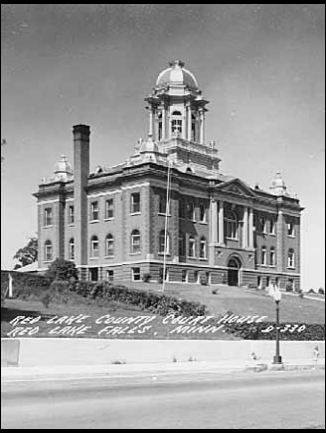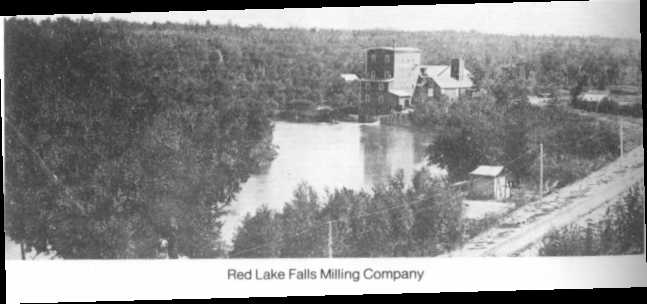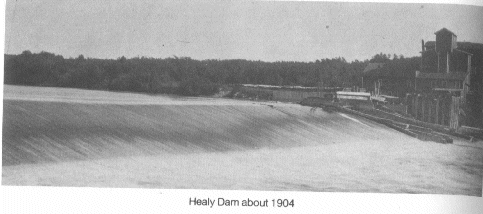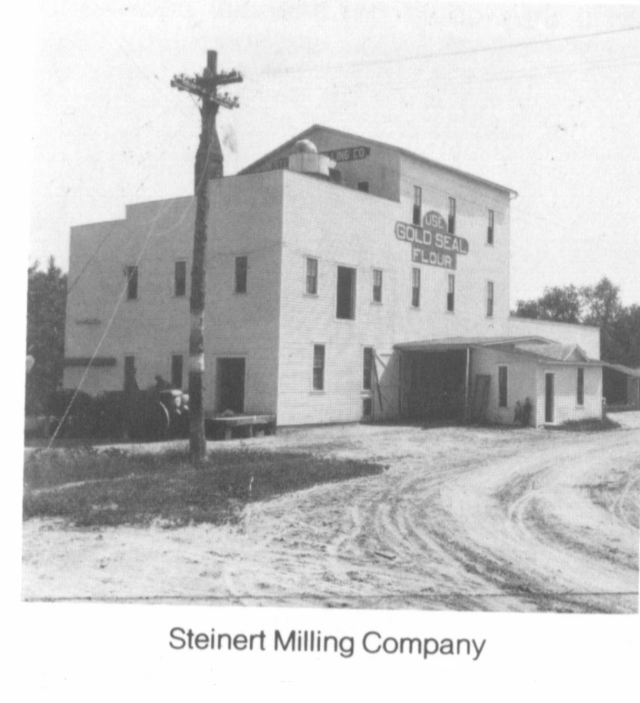 |
|
|
The water power furnished by the Red Lake and Clearwater rivers has been described by writers of that day as second to none in the northwest.
The Gazette in 1897 reported: "Not even the famous falls of St. Anthony can eclipse the power capable of being furnished by the natural combined power of the Clearwater and Red Lake rivers. Experts have estimated the total possibilities of these water powers, when developed to their highest, as 10,000 horsepower. The advantages Red Lake County offers for the locations of manufacturers discount anything to be found in the northwest."
BUSE BUILDS FIRST MILL
When Ernest Buse came to Red Lake Falls in late 1876, he found the Indians who had directed him there were correct. He was seeking a site that could offer water power for industry and sighted 12 distinct water power sites along the Red Lake and Clearwater rivers and decided immediately to settle here.
Buse, in partnership with Otto Kankel, pioneered the grist and saw mill on the Clearwaater in 1878 at the north end of Main Avenue. The wheel used to turn the mill was a 72-inch turbine that dated back to 1849. It had been used to turn a grist mill in St. Anthony and was the first wheel to be used in Minnesota. The mill continued at least until 1882 when it was sold.
RED LAKE FALLS MILLING COMPANY

The Northside Milling Company was erected by Carl Kretschmar about 1882 at the site on the Red Lake River northeast of Red Lake Falls.
In 1885 this business became the Red Lake Falls Milling Co. owned by Johnson and Marshall who manufactured "Mascot" and "Favorite" brands sold mostly to the eastern markets and Europe. The company owned 12 elevators, all of which sold the mill's flour. The mill had a capacity of 1,000 barrels daily and also operated a cooper shop where the barrels used by the mill were made. It is believed the mill was in operation as late as 1912.
HOLMES-HEALY-BOURDON MILL

James B. Holmes of Duluth, the promoter of the Duluth and Winnipeg Railroad, built the large flour mill one and a half miles west of Red Lake Falls in 1889. The large huge structure and its machinery cost $30,000.
The lead miller was Leo Steinert who later built the Steinert Milling Co. In 1892, Holmes, finding the mill unprofitable, sold to Mr. Van Hecke. The same year the Northern Pacific was induced to build a spur track down to the mill, a distance of over a mile. From 1894 to 1901 the mill was the property of Fred Gooding.
W. T. Spillane and Leo Steinert, as partners, rented the mill from 1900 until 1911 when the wheels stopped, never to start again. During this time, ownership changed hands several times. Ed L. Healy and Charles Bourdon purchased the mill from Gooding in 1901 and Healy bought out Bourdon the following year.
In 1912 the mill was sold to the Red River Power Co. which bought the property mainly for the excellent dam site. Various reasons have been attributed to the mill's demise. It was too big for a custom mill and too small for a merchant mill. Also the local competition given by the Marshall-Johnson flour mill because the country was not large enough to support two mills.
STEINERT MILL

The Steinert Mill in Red Lake Falls served the farmers of this county from 1911 until 1956. Leo Steinert, following the fire at the mill on the Healy Dam in 1908, decided it was time to build his own operation.
In 1911 be began construction of the water power and mill on the Clearwater River at the north end of Main Avenue in Red Lake Falls. To insure success, he designed his mill to custom milling to serve the local area. The construction entailed the building of a saw mill and procurement of logs, most of which came from "dead heads" left in the Red Lake River from previous log drives, earth moving by horsepower, and timber construction involved a lot of hard labor. He was assisted by his son, Theodore.
Leo induced his older son, Otto, to return to this city to join the company. Sometime around 1901, Otto had learned flour milling for his vocation in Minneapolis. With Otto as miller and Theodore running the business end of the operation, the Steinert Millling Company started operation in the fall of 1911 doing about 100-barrel capacity. John Schmitz was a valued imployee for almost all the years the mill was in operation.
Following Otto's death in 1956, the mill and site were sold. The old landmark was razed in 1975.
See also: TERREBONNE MILLING COMPANY
See also: Logging